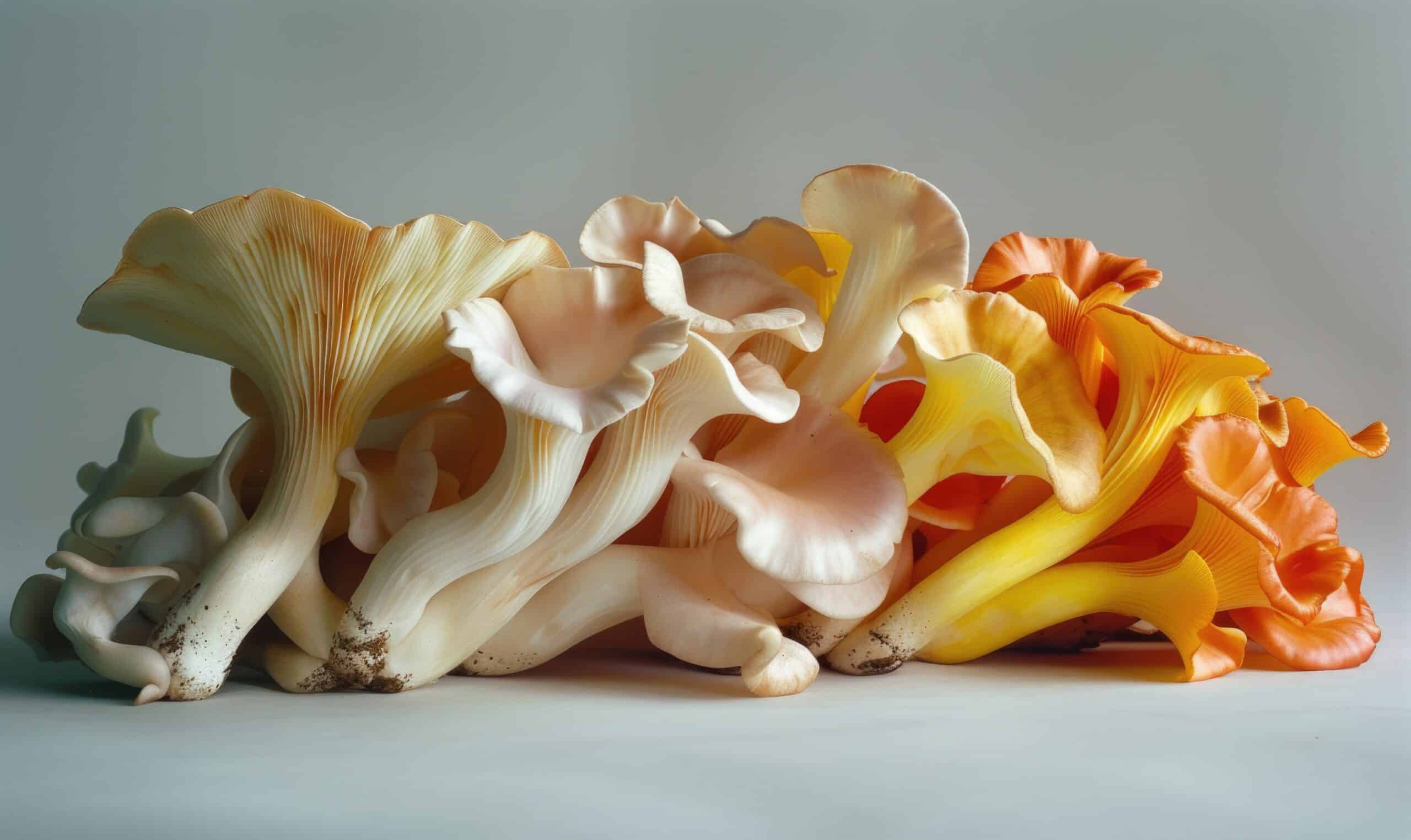Can I cultivate chanterelle mushrooms at home?
Key Takeaways
- Chanterelle mushrooms can be cultivated at home.
- Creating the ideal growing conditions is crucial for successful cultivation.
- Consistent moisture levels and careful harvesting are important for the growth and enjoyment of chanterelle mushrooms.
Yes, you can cultivate chanterelle mushrooms at home. Chanterelles are prized edible mushrooms known for their delicate flavor and vibrant golden color. While they are typically foraged in the wild, it is possible to create the ideal growing conditions in your own garden or outdoor space to cultivate these delicious fungi.
Creating the Ideal Growing Conditions
Chanterelles thrive in cool, moist environments with plenty of organic matter. They have a symbiotic relationship with certain tree species, forming mycorrhizal associations. These associations are mutually beneficial, as the trees provide the mushrooms with nutrients, while the mushrooms enhance the tree’s ability to absorb water and nutrients from the soil.
To cultivate chanterelles, it is important to choose a suitable growing site with well-draining soil and a mix of tree species that have a mycorrhizal relationship with chanterelles. Shaded areas with decaying wood or leaf litter are ideal for creating the right conditions. The presence of organic matter helps provide the necessary nutrients for the mushrooms to grow.
Preparing the Soil
Before planting chanterelle spawn or mycorrhizal inoculum, it is important to prepare the soil. Amend the soil with organic matter, such as compost or well-rotted manure, to improve fertility. This will provide essential nutrients for the mushrooms to thrive. Additionally, chanterelles prefer slightly acidic to neutral pH levels, so it may be necessary to adjust the soil pH if it is too alkaline.
Planting and Maintenance
The best time to plant chanterelle spawn or mycorrhizal inoculum is during the fall or spring. Mix the spawn or inoculum with the prepared soil and distribute it evenly in the chosen growing site. Patience is key when cultivating chanterelles, as it can take several months to a few years for them to establish and produce mushrooms.
Consistent moisture levels are crucial for the successful cultivation of chanterelles. The soil should be kept consistently moist, but not waterlogged. Chanterelles prefer a humid environment, so regular watering may be necessary, especially during dry periods. Mulching the area with organic matter can help retain moisture and create a favorable microclimate for the mushrooms.
Harvesting Chanterelles
Once the chanterelles have established and started to produce mushrooms, it is time to harvest. When harvesting, it is important to cut the mushrooms at the base, rather than pulling or twisting them out of the ground. This helps ensure the continued growth and future harvests of the mushrooms.
Remember that chanterelles are delicate and can be easily damaged, so handle them with care when harvesting and storing. Freshly harvested chanterelles can be stored in a paper bag in the refrigerator for a few days. However, they are best enjoyed when cooked and consumed shortly after harvest.
Conclusion
While cultivating chanterelle mushrooms at home requires patience and attention to detail, it is a rewarding endeavor for mushroom enthusiasts and food lovers alike. By creating the ideal growing conditions, choosing the right trees, and maintaining consistent moisture levels, you can enjoy the unique flavors and beauty of chanterelle mushrooms right from your own garden.
Related Websites:
FAQs:
Q: Can I cultivate chanterelle mushrooms at home?
Yes, chanterelle mushrooms can be cultivated at home. While it can be more challenging compared to other mushroom varieties, with the right techniques and equipment, you can successfully grow chanterelles in your own garden or indoors.
Q: What are the characteristics and appearance of chanterelle mushrooms?
Chanterelle mushrooms have a distinct appearance with their vibrant golden or orange color, trumpet-like shape, and ridged caps. They are known for their delicate and slightly fruity aroma.
Q: What are the nutritional benefits of chanterelle mushrooms?
Chanterelle mushrooms are not only delicious but also nutritious. They are a good source of vitamins, minerals, and antioxidants. They provide important nutrients such as vitamin D, potassium, and fiber.
Q: What are the challenges in cultivating chanterelle mushrooms?
Cultivating chanterelle mushrooms can be challenging due to their specific growing requirements. They have a symbiotic relationship with certain tree roots, making it difficult to replicate their natural habitat. Additionally, they are sensitive to environmental factors, requiring precise temperature and humidity conditions.
Q: What are the methods for cultivating chanterelle mushrooms?
There are various methods for cultivating chanterelle mushrooms, but success rates may vary. Techniques such as spore propagation, mycelium inoculation, or using grow kits can be employed. It’s important to research and experiment to find the method that works best for you.






